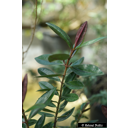Wissenswertes zum Taxon (Art, Unterart, Varietät...)
Veronica × andersonii Lindl. & Paxton 1851
Plantaginaceae
- Wegerichgewächse (APG IV)Taxonkonzept: The Plant List (2014), version 1.1
Verbreitung: Kulturform
Hebe andersonii (Lindl. & J. Paxton) Cockayne - Accepted: Hebe andersonii (Lindl. & J. Paxton) Cockayne bei The Plant List (2014), version 1.1; Familie: Plantaginaceae (APG III)Hebe × andersonii (Lindl. & Paxton) Cockayne - Accepted: Hebe × andersonii (Lindl. & Paxton) Cockayne bei Zander 2008; Familie: Scrophulariaceae (Zander 2008)Hebe × andersonii (Lindl. & Paxton) Cockayne - Accepted: Hebe × andersonii (Lindl. & Paxton) Cockayne bei The Plant List (2010); Familie: Plantaginaceae (APG III)Hebe × andersonii (Lindl. & Paxton) Cockayne - Synonym: Hebe andersonii (Lindl. & J. Paxton) Cockayne bei The Plant List (2014), version 1.1; Familie: Scrophulariaceae (APG III)Veronica × andersonii Lindl. & Paxton - Accepted: Veronica × andersonii Lindl. & Paxton bei The Plant List (2014), version 1.1; Familie: Scrophulariaceae (APG III)Hebe × andersonii (Lindl. & Paxton) Cockayne - Synonym: Veronica × andersonii Lindl. & Paxton bei Plants of the World Online; Familie: Plantaginaceae (APG IV)
Erhardt, W., Götz, E., Bödeker, N. & Seybold, S. (2008): Der große Zander. Enzyklopädie der Pflanzennamen. Band 2. Arten und Sorten. Eugen Ulmer KG, Stuttgart (Hohenheim), 18. Aufl., 2103 S.; The International Plant Names Index (2009). Published on the Internet http://www.ipni.org; Courtesy to IPNI, 2009. Exported from IPNI at date: 2009-09-22 20:17:51;
| Geschlecht | Standort | Akzessions-Nr. | Pflanzjahr | Spende | IPEN | Lat. | Long. |
|---|---|---|---|---|---|---|---|
| Kübelpflanze | SYS-K-6096-2022 | 2021-09-30 | XX-0-HOH-SYS-K-6096-2022 | 0 | 0 |

